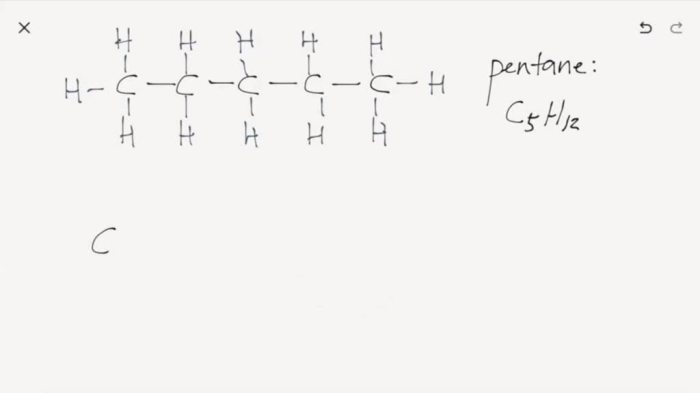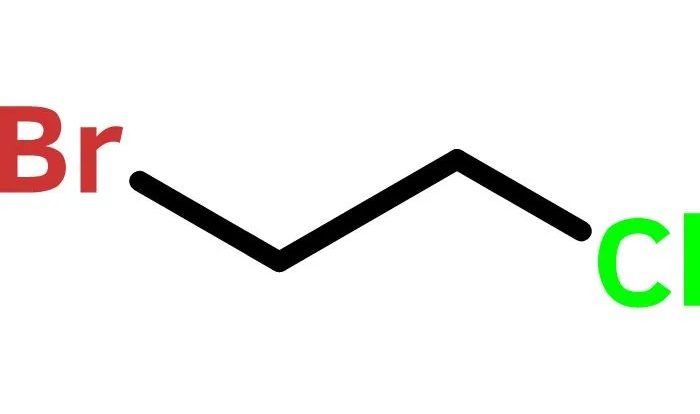Identify the condensed formula for the skeletal drawing shown below. – In the realm of organic chemistry, the ability to decipher the condensed formula from a skeletal drawing is a fundamental skill. This guide delves into the intricacies of this process, providing a comprehensive framework for identifying functional groups, determining atom count, and constructing the condensed formula.
Embark on this journey of molecular exploration, unlocking the secrets hidden within the skeletal structures.
By scrutinizing the skeletal drawing, we embark on a meticulous analysis of bond types, hybridization, and atomic connectivity. This in-depth examination unveils the molecular architecture, revealing the presence of rings, branched structures, and other structural features. Armed with this knowledge, we can unravel the molecular identity, deducing its shape, geometry, and the impact of structural characteristics on its properties.
Condensed Formula

The condensed formula is a shorthand notation used to represent the structure of a molecule. It provides information about the types and number of atoms present in the molecule, as well as the functional groups that are present.To determine the condensed formula of the skeletal drawing, we need to first identify the functional groups present.
The skeletal drawing shows the presence of a carboxylic acid group (-COOH) and an alcohol group (-OH). The carboxylic acid group has priority over the alcohol group, so the condensed formula will be written as follows:CH3CH2CH2COOHThis condensed formula indicates that the molecule has three carbon atoms, seven hydrogen atoms, and two oxygen atoms.
It also shows that the molecule contains a carboxylic acid functional group and an alcohol functional group.
Skeletal Drawing Analysis

The skeletal drawing shows that the molecule has a linear structure. The carbon atoms are connected by single bonds, and the oxygen atoms are connected to the carbon atoms by single bonds. The hybridization of the carbon atoms is sp3, which means that they have a tetrahedral geometry.The
skeletal drawing also shows that the molecule has no rings or branched structures. It is a simple, linear molecule.
Functional Group Identification

The skeletal drawing shows the presence of two functional groups: a carboxylic acid group (-COOH) and an alcohol group (-OH).The carboxylic acid group is a polar functional group that contains a carbon atom double-bonded to an oxygen atom and single-bonded to a hydroxyl group (-OH).
Carboxylic acids are weak acids that can donate a proton (H+).The alcohol group is a polar functional group that contains a carbon atom single-bonded to a hydroxyl group (-OH). Alcohols are weak bases that can accept a proton (H+).
Structural Features
The skeletal drawing shows that the molecule has a linear structure. The molecule is not symmetrical, as the carboxylic acid group is located at one end of the molecule and the alcohol group is located at the other end.The linear structure of the molecule allows it to pack closely together with other molecules, which can lead to the formation of crystals.
The polar functional groups on the molecule can also interact with each other, which can lead to the formation of hydrogen bonds.
Questions Often Asked: Identify The Condensed Formula For The Skeletal Drawing Shown Below.
What is the significance of identifying the condensed formula?
The condensed formula provides a concise representation of a molecule, capturing its elemental composition and functional groups. It is essential for understanding molecular structure, reactivity, and properties.
How do I determine the hybridization of carbon atoms in a skeletal drawing?
The hybridization of carbon atoms can be deduced based on the number of bonds they form. For example, a carbon atom with four single bonds is sp3 hybridized, while a carbon atom with a double bond and two single bonds is sp2 hybridized.
What is the role of functional groups in molecular identification?
Functional groups are specific arrangements of atoms that impart characteristic properties to molecules. Identifying functional groups allows us to predict molecular reactivity, solubility, and other physical and chemical properties.
